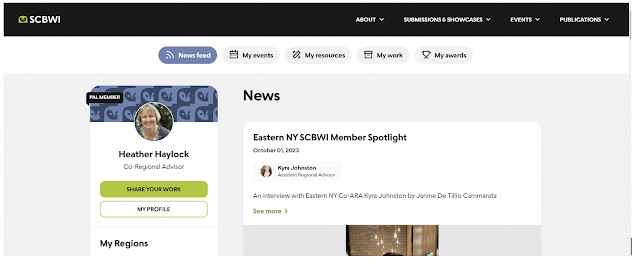SCBWI NZ Five Questions - Illustrator Aki Fukuoka
This month SCBWI New Zealand interviews Aki Fukuoka
Aki Fukuoka is a children’s book illustrator based in rural Whangarei. With over 80 published titles, her work includes popular series such as Billie B Brown (Hardie Grant Egmont), Sam Kerr (Simon & Schuster), Go Girl (Hardie Grant Egmont), and Lily the Littlest Angel (Scholastic).
Born in Japan and raised in New Zealand, Aki was encouraged by her parents to explore art from a young age. Alongside her four siblings, she spent her days adventuring their backyard, filled with bushes and wildlife, playing musical instruments, drawing, and inventing stories. This early immersion in imaginative play is a significant reason why Aki enjoys creating stories, characters, and whimsical scenes.
Aki’s commitment to art deepened after achieving the highest mark in New Zealand for her high school art studies. She earned a Bachelor of Fine Arts from Elam School of Fine Arts, University of Auckland, and later pursued postgraduate studies focused on sequential storytelling. Initially considering a career as a physicist, she decided in her final years of university to follow her passion for illustration.
Today, Aki is thrilled to spend her days doing what she loves—creating stories and drawing.
1. What is your writing or illustrating day like? When and how do you create?
To make time for my own work, I create whenever I find the opportunity, balancing tasks based on their demands for focus and urgency! For administrative tasks like answering emails, I use moments when I’m waiting at my kids’ music or swimming lessons. I read manuscripts and illustration briefs while waiting for school buses. For more creative tasks, like roughing out illustrations and writing stories, I need a quiet space, which sometimes means resorting to TV to entertain my youngest and get some focused time. When possible, I work at the local library for longer, uninterrupted stretches.
My process begins with pencil sketches in my home studio—a tiny, messy, cozy space where my cats, kids school projects, and husband’s homebrewing kit often make appearances. Once my roughs are approved, I ink them using Procreate on my iPad and finalize the illustrations in Photoshop on my desktop computer. I enjoy diversifying my creative process to avoid being limited to a single tool or a space.
2. Where do your best ideas come from? How do you develop them further?
At some point, I may choose to share my work with a third party for additional insights and feedback, usually with my sister or my lovely critique group (ladies, you know who you are!). This process of developing, critiquing, and refining can be repeated many times over weeks, months, and even years. I have a graphic novel I’ve been brewing, marinating, and prodding for almost 20 years, and I feel it is almost, ALMOST ready to go into my creative-oven and bake into a book!
3. What is the work you are most proud of so far? Why?
Additionally, my friendship with Sally Rippin, the series’ author and current Australian Children’s Laureate, and the close collaboration with the Hardie Grant publishing team, make this work particularly meaningful.
I prefer to think of it as a goal rather than a dream, as it feels more attainable. My goal is to have my own author-illustrator books published. After 15 years illustrating others' stories, I’m eager to create and illustrate my own. I hope my work will be so impactful that it becomes timeless, allowing future generations, including my great-great-grandchildren, to connect with me through my stories.
Just keep drawing! One of the most common questions I get asked is how I became good at drawing, and the answer is simple: I never stopped.
No, I wasn’t born with drawing skills. Like most children, I started drawing in kindergarten when teachers and parents encouraged us to be creative. I enjoyed it so much that I continued drawing for fun at home during my free time. Drawing was my way to play, and that’s still true today.
Don’t worry about doing it perfectly—just draw what you enjoy, whether it’s your cat, a superhero, or random doodles in the margins of your textbooks. I believe that if you spend enough time doing anything, you will eventually become good at it. Consistency is key to improvement, and enjoying the process will help you overcome any challenges along the way. So, just keep drawing!
If you'd like to see more of Aki's work check out her website HERE











Comments
Post a Comment